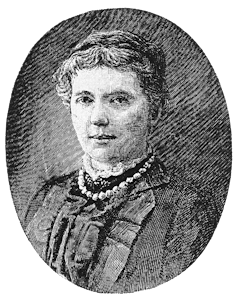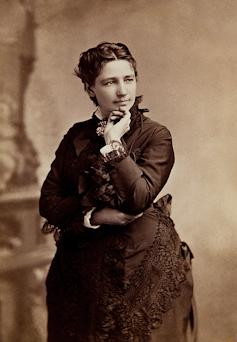James Taylor, Lancaster University
On March 26 1973, the London Stock Exchange admitted its first female members. This followed years of resistance, with London trailing behind other smaller exchanges around the UK.
That women had been excluded for so long was not only due to institutional misogyny. Research has shown how finance was imagined in sexist terms for centuries. And despite the extraordinary accomplishments of prominent female figures over the past 50 years, these biased beliefs persist to this day.
Long before stock exchanges existed, women were active investors and speculators. They navigated the bustling coffee shops of London’s Exchange Alley, where people met to trade stocks. They sometimes acted as intermediaries, managing the investments of others in return for commission. In other words, women were stockbrokers.
But their presence in the market often attracted attention. This was especially the case in times of crisis, such as the South Sea Bubble in 1720 – one of the UK’s first speculative manias. Male commentators claimed women were too emotional to be effective investors, let alone brokers. Only men, to their minds, could exercise the self-restraint necessary to master the market.
So women got squeezed out. The title of the bestselling 18th-century investment guide –– Every Man His Own Broker –– was telling. The author, Thomas Mortimer, thought that women should only invest via a male relative. And he certainly didn’t think they were capable of being brokers.
How financial institutionalisation excluded women
When stockbrokers moved to a purpose-built stock exchange in the heart of the City of London, at the start of the 19th century, they signed up to a new set of rules. Though these did not specifically bar women, the wording made it clear that the exchange was for men only:
No new applicant for admission is admissible if he, or his wife, be engaged in business.

Later in the century, stock exchanges were established in towns and cities across the UK, and these followed London in excluding women.
Yet they never had a monopoly. From the 1880s, a few enterprising women started establishing their own brokerages. Trading a stone’s throw from the Bank of England, Amy Bell specialised in dealing for women. She sought to educate them in a subject about which they had often been kept ignorant:
I want to make women understand their money matters and take a pleasure in dealing with them. After all, is money such a sordid consideration?
Some were the daughters of stockbrokers who worked in family firms, occasionally taking them over on the death of the father. Others had no family connections and started in secretarial roles. They determinedly worked their way up to senior positions, like Edith Midgley in Bradford.

In the US, meanwhile, pioneering figures including the radical feminist Victoria Woodhull paved the way for a feminine presence on Wall Street.
By the interwar years, women had proven they could be successful stockbrokers. Clients, both male and female, reportedly had no objections. Indeed, many preferred dealing with a woman. But persuading institutions was altogether harder.
Publicly, the London Stock Exchange’s stance was that there was no rule against women joining. Privately, when women did try to apply –- the first as early as 1936 –- they were firmly told to drop the matter.
What changed? 1973 was not the result of an institution quietly moving in line with public opinion. A series of dramatic votes on the issue between 1967 and 1971 all went against admitting women. Brokers claimed that women were too delicate for the trading floor – they would be jostled, they would be offended by the language. One broker was clear this was no place for a woman:
When I’m there, I’m there to do business and when I’m doing business I’m not inclined to be as gentlemanly as when I’m pouring sherry at home.
Another explained that stockbroking, “like coal-mining”, was best done by men.
How sexist beliefs about finance endure
Outside London, attitudes were changing. Without much fanfare, smaller stock exchanges began accepting female applicants. Aberdeen was first in 1964, soon followed by Sheffield and Huddersfield. Larger exchanges followed. By the early 1970s, Glasgow, Nottingham and Manchester had all gained female members.
This mattered to London because for some years there had been plans to amalgamate the country’s stock exchanges to promote efficiency. In contrast to the polls on admitting women, London members enthusiastically voted for the creation of a United Stock Exchange in 1972.
Muriel Bailey, a broker, had long campaigned for equality in the City. In a filmed BBC interview in 1967, she had spoken candidly of the “deep-rooted prejudice in the Stock Exchange about women members, which is utterly ridiculous”. She explained that she did the same work as the partners and wanted the same status as them.
In 1972, she seized her chance. Writing to the London Stock Exchange, she pointed out that under the new rules, provincial brokers –- some of whom were women –- would be able to access the London trading floor, whereas those who happened to work in the capital would not. This was untenable, she said. The authorities were forced to concede.
The day women were admitted, members were on their best behaviour for the cameras. Those who ventured onto the floor reported a friendly reception. But it was not quite the victory it seemed.
Members had not voted for equality. Rather, it had been forced on them. And they were quick to make it clear that this was still a male domain.
Women were cast as intruders, and some were subjected to harassment. One new member who dared to wear a miniskirt faced catcalls, wolf whistles and yells of “Get ’em off!”. All were given derogatory nicknames.
Nevertheless, over the past 50 years, women have been able to forge successful careers in the City. Some, including the London Stock Exchange’s current CEO, Julia Hoggett, have demonstrated they can rise to the top. Challenging the macho culture, however, has been much harder.
History shows that finance is not inherently masculine. Rather, it was constructed as such by the institutions that sought to exclude women. Despite the barriers they have faced, women have, in fact, been trading successfully as stockbrokers, on and off, for over 300 years.
The gendered beliefs that are still widely held today –- that men are more financially literate and that women are excessively risk-averse -– are determined more by culture than biology. Recognising this is the next step towards fulfilling the promise of 1973.
James Taylor, Senior Lecturer in History, Lancaster University
This article is republished from The Conversation under a Creative Commons license. Read the original article.

